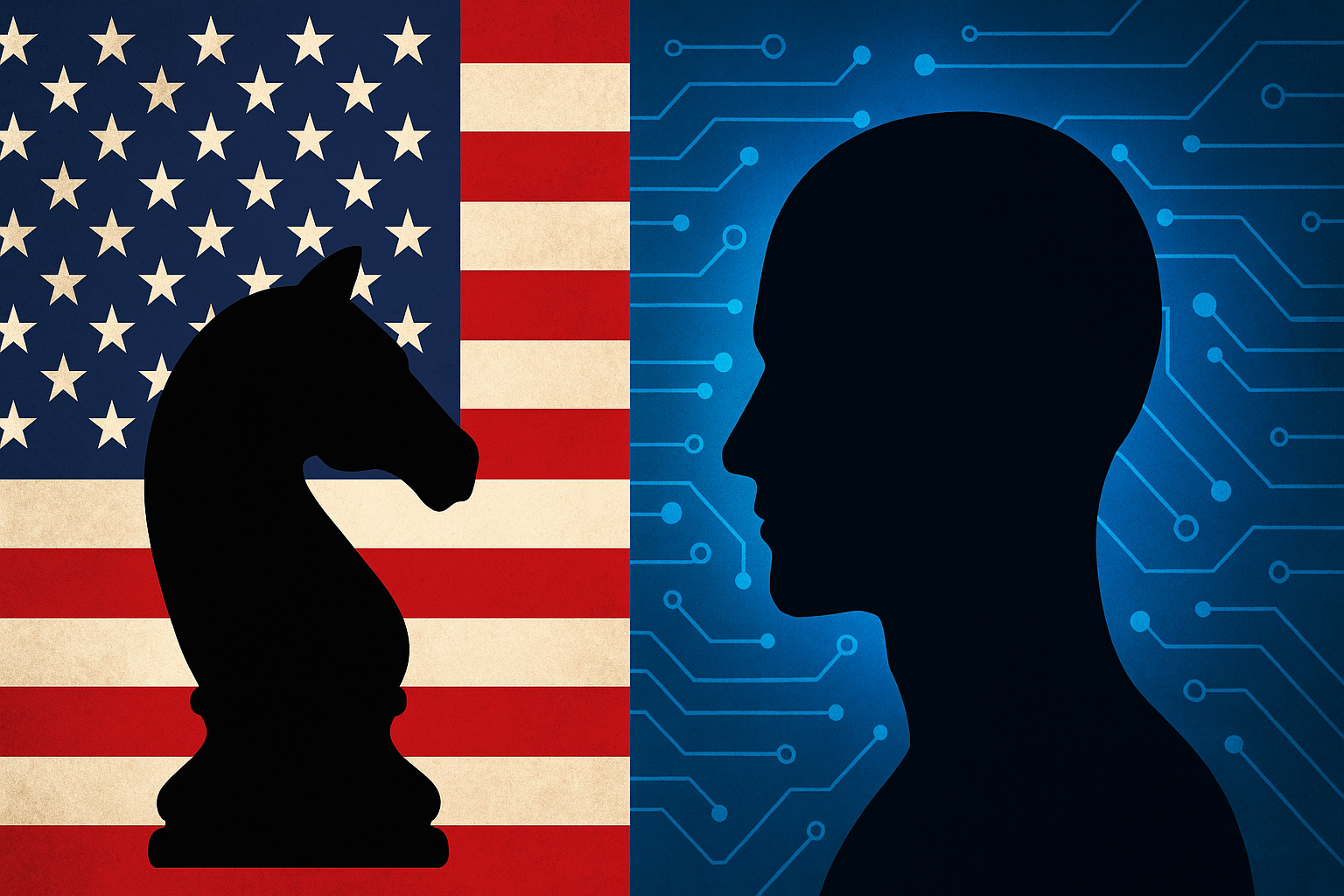As artificial intelligence becomes the new foundation of global power, the United States finds itself in the middle of what experts increasingly call the AI Cold War. This is not just a technological race it’s a strategic, economic, and ideological competition over who will define the future of humanity. The Trump administration’s recent AI Action Plan has acknowledged this urgency, proposing over 90 actionable policies to reassert America’s dominance in this rapidly evolving domain.
In this new frontier, the winner won’t just develop better algorithms it will determine how medicine is practiced, how wars are fought, and how societies function. The stakes could not be higher.
Rebuilding National AI Infrastructure
One of the biggest components of the AI Action Plan is the bold ambition to reshape the U.S. digital infrastructure. By proposing new public private partnerships to build domestic data centers and semiconductor fabs, the U.S. aims to reshore its technological backbone.
In Arizona, Intel’s $20 billion investment in new chip factories, spurred by the CHIPS Act, is already showing results. Intel’s new fabs are expected to produce 7nm and 5nm chips critical for training large language models like GPT and Gemini. This resurgent domestic capacity is a direct response to vulnerabilities exposed during COVID era supply chain disruptions and growing threats from China’s state backed tech ambitions.
These industrial moves aren’t isolated they reflect the broader strategy to win the AI Cold War, where semiconductors are as strategic as oil was in the 20th century.
The Role of Leadership and Coordination
To compete with centralized tech giants like China, where government and companies operate under unified national objectives, the U.S needs better internal coordination. The AI Action Plan proposes a Chief AI Officer Council to align federal agencies’ AI goals.
According to Dr. Eric Schmidt, former Google CEO and chair of the U.S National Security Commission on Artificial Intelligence, China is playing to win. They view AI as an instrument of global power. The U.S. must organize and innovate faster, or risk falling behind.
A cohesive approach ensures that American efforts in defense, education, healthcare, and commerce are not siloed but interconnected thus maximizing impact and preserving leadership in the AI Cold War.
Education and Talent Development
Another front in the AI revolution is the talent war. For decades, the U.S has been the top destination for global talent in computer science and AI. But that advantage is under threat. With stricter visa policies and growing tech ecosystems in countries like China and India, America risks a brain drain.
Dr. Sara Khan, a Pakistani AI researcher who studied at MIT, shared her journey. What brought me to the U.S. was the freedom to explore. But more and more of my peers are choosing to stay in Asia. If America wants to lead, it must open doors, not close them.
The AI Action Plan addresses this by advocating for immigration reform, increased federal funding for STEM education, and early integration of AI concepts into K–12 curricula.
Ethical Leadership on the Global Stage
In the AI Cold War, ethical leadership might be America’s strongest weapon. While China exports surveillance driven AI technologies to authoritarian regimes, the U.S can offer an alternative human centric, privacy respecting, and transparent AI systems.
Fei-Fei Li, co director of Stanford’s Institute for Human Centered AI, emphasizes, It’s not enough to be first we must also be right. The U.S. has a duty to lead with democratic values at the heart of its AI exports. By building international coalitions, such as the Global Partnership on AI, and influencing the standard setting bodies, the U.S. can shape not only the technology but the rules that govern it.
Private Sector and Venture Capital Mobilization
No AI strategy can succeed without the private sector. The U.S remains home to OpenAI, Google DeepMind, Anthropic, and countless startups that are setting benchmarks in AI research and deployment. But government backing is essential for high risk, high reward projects.
OpenAI’s GPT evolution would not have been possible without early funding from DARPA style public research, followed by billions in private capital from Microsoft. This hybrid model is something China is now trying to replicate.
The AI Action Plan proposes tax incentives for AI startups, federal support for R&D, and the creation of special innovation corridors in underdeveloped regions a strategy similar to how Silicon Valley itself was born out of defense contracts and Stanford led innovation.
Winning the AI Cold War with Vision and Values
The AI Cold War is not a future scenario it’s already underway. While China takes a centralized, authoritarian approach to AI development, the U.S must take a democratic decentralized, and innovation driven path.
Winning this race will require more than capital or code it will take vision, coordination and values. The U.S must lead not just in building smarter machines but in guiding how those machines are used, who they benefit, and what they stand for.
If America succeeds, it will not only retain technological dominance but also secure a future where freedom and fairness are built into the algorithms that shape our lives.

